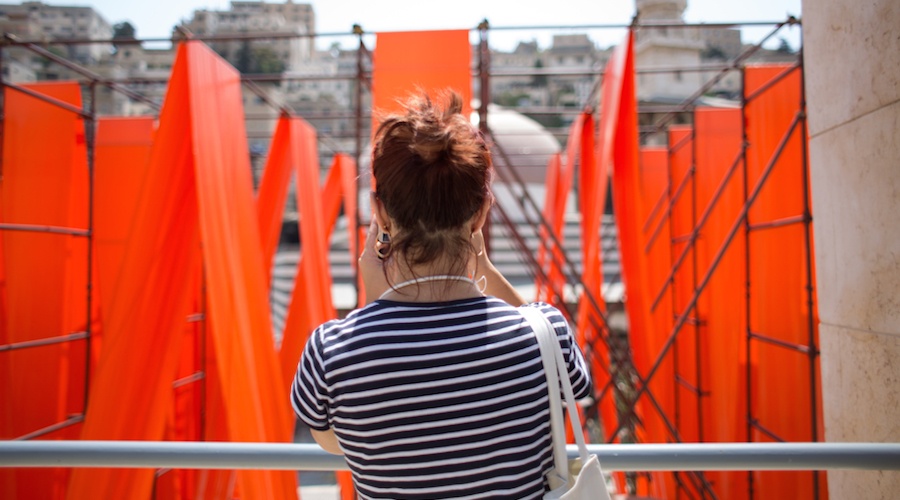Amman Design Week breathes life into the city and its people

Amman is a city of concrete. There is barely a body of water or extensive greenery. It is arid, hilly with very little vibrant color.
So when 100 designers came together to bring life and color to the city’s dusty hills, 35,000 visitors came flocking.

More than anything, Amman Design Week (ADW) intended to remind Ammanis of their senses. Co-director Abeer Seikaly, considered the ten day event a learning platform aimed at invoking the visitor’s sensory perception in order to experience something fresh and different.
“[Learning is about] being engaged with your environment and nature, interacting with the building material, touching, smelling, and thinking,” Seikaly said.
Some designs went as far as creating an instrument out of the sounds of desert rocks, and storing Amman’s smells in salt shakers.

Humanizing design
ADW had no specific theme but works exhibited represented the potential of utilitarian design such as a heart aid device that increases the chances of surviving heart attacks by 74 percent.
The installations, unconventional jewelry, eccentric clothing and other works focused on challenging the common understanding of design, highlighting its ignored presence in everyday life.

“Design is everywhere… the food you eat, and the clothes you wear. The lives we live and the cities we live in are always touched by design, and what makes a successful environment versus a non successful one comes through design,” said co-director Rana Beiruti, who hoped that ADW would reveal Jordan’s hidden talents.
Throughout the 100 events that took place in 40 different venues across the city, a clear message was echoed over and over again: design is not unattainable and not an inaccessible luxurious display.
Design is human, said Sahel al Hiyari, one of ADW’s curators and a renowned Jordanian architect.
“You mediate the relationship with your environment through design… and in order for this to happen, the result has to be conducive to wellbeing… catering to needs and solving problems,” he said.

Technology within design
Many of the displayed artwork invoked nostalgia to deep seeded culture and heritage, while others leaned into the future. ADW featured a makerspace that displayed experimental design projects finding harmony in combining technology and design. 3D printing and digital fabrication were some of the tools introduced.
It is a misconception that technology is high-end software and hardware, explained Seikaly.
“If you look at the root of technology, it is craft, it is art, it is weaving, it is making. A basket that was woven a hundred years ago is technology. It’s about the thought process, how you create something that connects with people,” she said.

Although Amman lags in design in comparison to its neighboring cities of Beirut and Dubai, Al Hiyari is hopeful about the future.
“Amman is still young in design, which makes the possibilities enormous. There is a sense of excitement and reinventing ourselves rather than defining an identity,” he said during an interview with Wamda.
According to Al Hiyari, ADW succeeded in reconciling a lost relationship between the city and its people.
“Ammanis are very much dissociated from their city and there needs to be events like ADW to bring them face to face with the city that is still searching for an owner,” he said.
Cover photo via ADW


